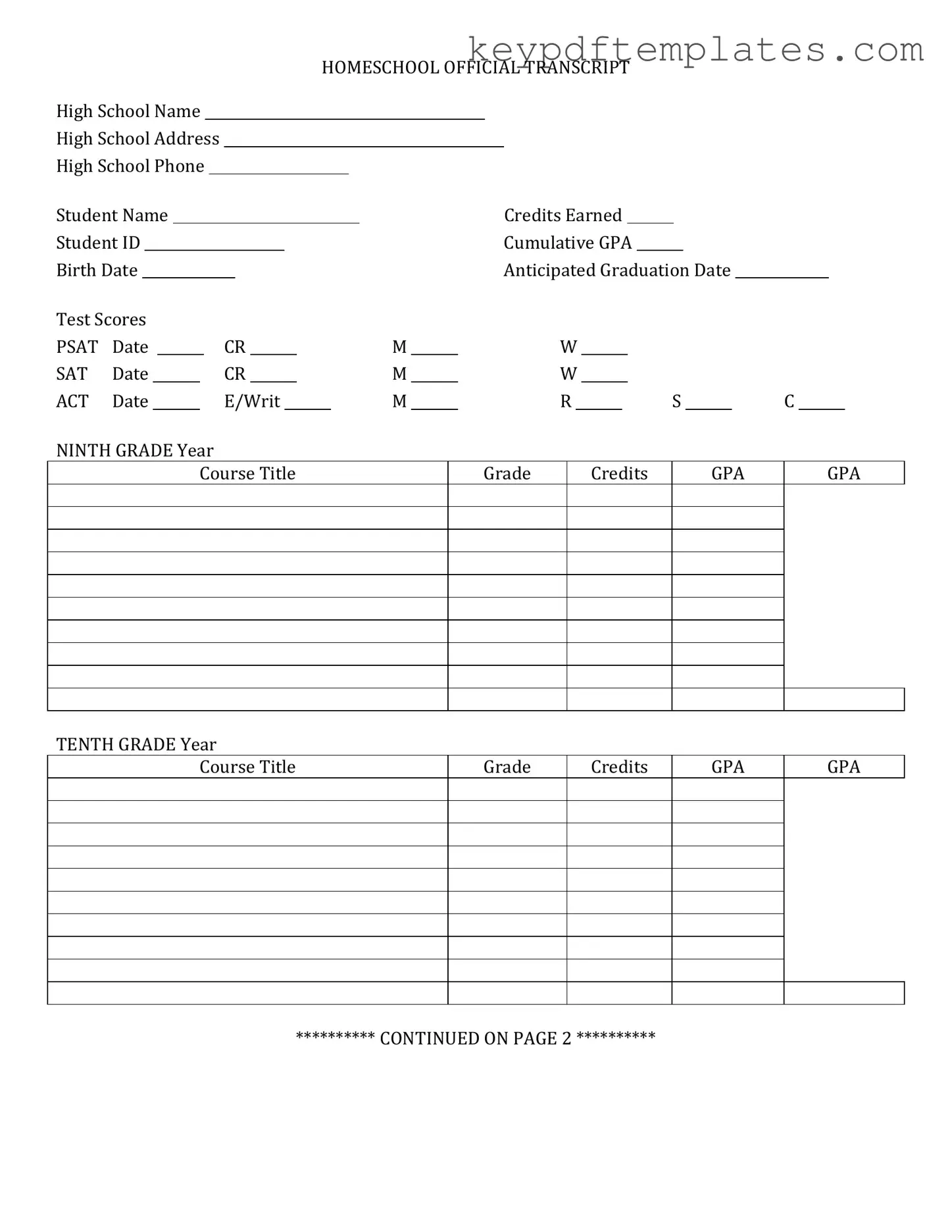Get High School Transcript Form
The High School Transcript form is an official document that provides a comprehensive record of a student's academic performance throughout their high school years. It typically includes details such as course titles, grades received, and credits earned, serving as a crucial tool for college admissions and job applications. Understanding the components and significance of this form is essential for students and parents alike.
Modify Document Online
